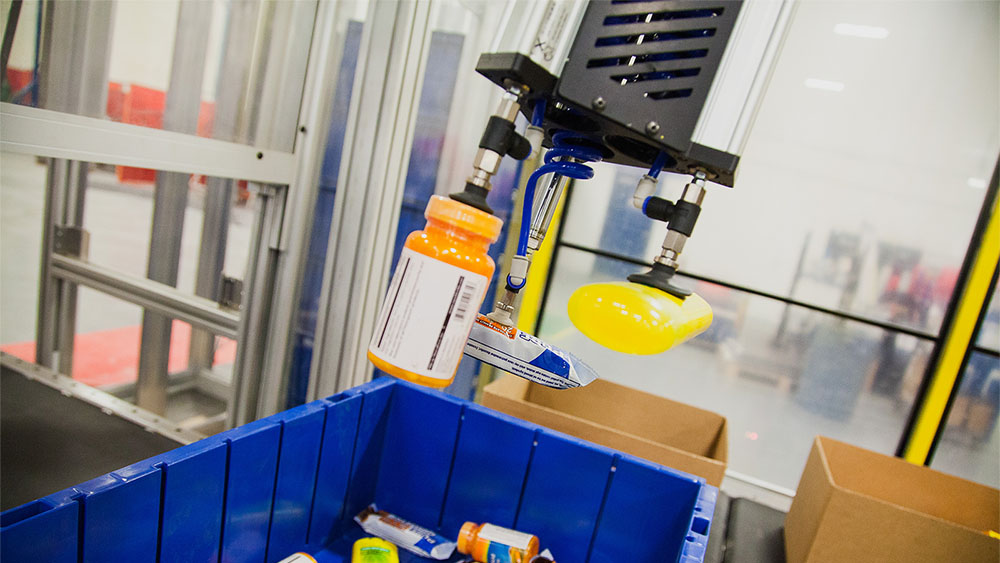
Top 3 Myths about Industrial Robotic Integration
Megan Churchill | 7 April 2021
In today’s environment, technology and automation are growing and advancing at a drastic speed. Recent investments by venture capital and private equity firms are further evidence of that rapid growth. Whether industries are looking to increase the amount of throughput in their facility, reduce or eliminate any ergonomic risks, or increase overall efficiency of the operation, the right combination of technology and automation in an industrial robot can provide the solution.
So why are some individuals still hesitant about implementing industrial robots? Common misconceptions in our industry could be playing a part in that. The top three most common myths touch on ROI, applications, and complexity.
1. “ROI is too Low”
One of the biggest myths about industrial robotic integration is that the capital investment is too high to ever be justifiable. This is just simply not true. For example, most robotic palletizing applications have an ROI averaging between 1 to 2 years.
Making that capital investment up-front, as you design your automation system, is also going to lead to cost savings down the road. Once robotic capabilities are incorporated, adding a new SKU or product to the production list becomes a simple process that takes minimal effort and relatively no down-time.
Robots are able to handle any demand changes in a flexible manner. Whereas, dedicated equipment can be “capped” at a specific throughput. Robots can accommodate that demand change within a reasonable margin.
Industrial robots can also be re-used to operate in a variety of different applications. The robot would just need to be retrained through software and control changes. The main capital investment, however, is already accounted for because the robotic equipment purchase is already made.
2. “Robotics are Only Beneficial for High Volume Applications”
It is true that robots are great for mass production, but the idea that they are not favorable for low-medium volume applications is a myth. Improved safety and quality control are just a couple of the benefits that industrial robotics add to all applications, despite the throughput rate difference.
If those low-medium volume applications have a mixed SKU or product list, robotic integration is especially advantageous. An end of arm tool (EoAT) is connected to the robotic arm that is going to interface with the product. This tooling is always chosen to maximize and optimize the amount of product that can be handled robotically.
3D vision systems can also be implemented to aid in picking more intricate parts and products, by identifying the best ‘pick’ position for the EoAT.
A tool changeover can be added to allow the robot to switch between two different EoATs. This is beneficial if a single robot is intended to perform more than one job.
In an application where the throughput is lower, a robot can be deployed to tend to two different tasks to ensure the robot is taking on its maximum workload.
3. “Industrial Robots are too Technical & Complicated to be Efficient”
The complexity associated with industrial robotics needs debunked. In all reality, robots are being deployed to be as user friendly as possible. An interactive touchscreen is mounted to the main control panel and allows the operator to get a visual representation of the current state of the robot. This touchscreen also relays any errors or issues and provides clarity to operators.
Clients and those directly interacting with the robotic equipment are trained on how to use, control, and troubleshoot the robot cell before a system go-live takes place.
Along with the provided start-up and training services, remote VPN access allows for 24/7 customer support to troubleshoot the majority of issues remotely in order to keep operations running smoothly and reduce downtime.
Exploring Robotic Capabilities
Have you been holding back on exploring the capabilities of industrial robotics in your facility? Have the above misconceptions factored into that hesitance? As an industrial integrator, Bastian Solutions will analyze your application and ensure that a robot is justifiable. For more information on our robotic capabilities reach out to Bastian Solutions for the guidance and support needed when integrating robotics into your operation.
Megan Churchill is a Bastian Solutions Field Application Engineer with a robotics focus based in St. Louis, Missouri. She has a bachelor’s in Industrial and Manufacturing Systems Engineering from University of Missouri-Columbia. Megan works closely with customers to identify the needs of the operation and advises the appropriate solution based on those needs.
Comments
No comments have been posted to this Blog Post
Leave a Reply
Your email address will not be published.
Comment
Thank you for your comment.